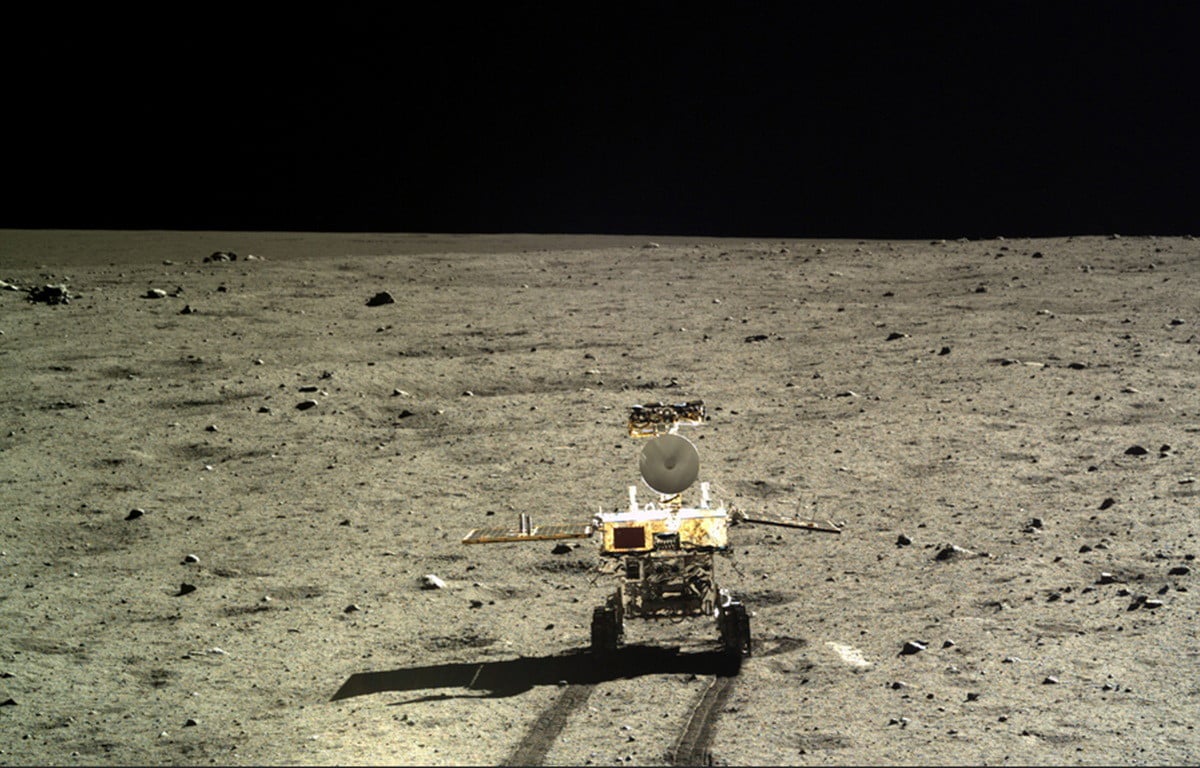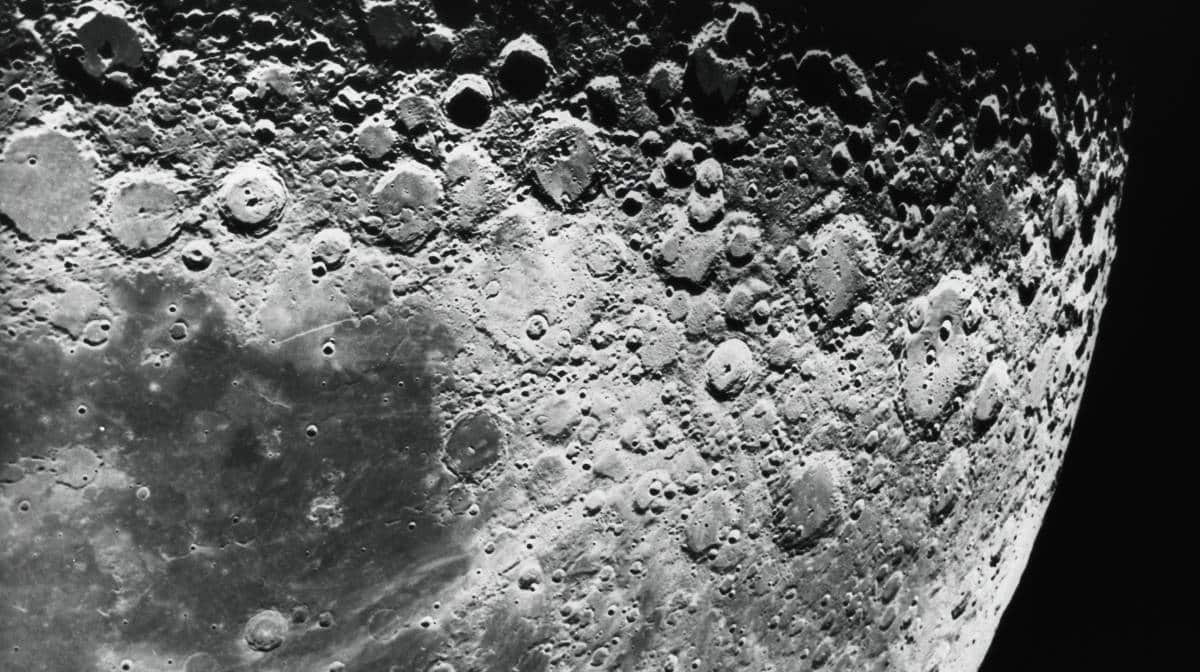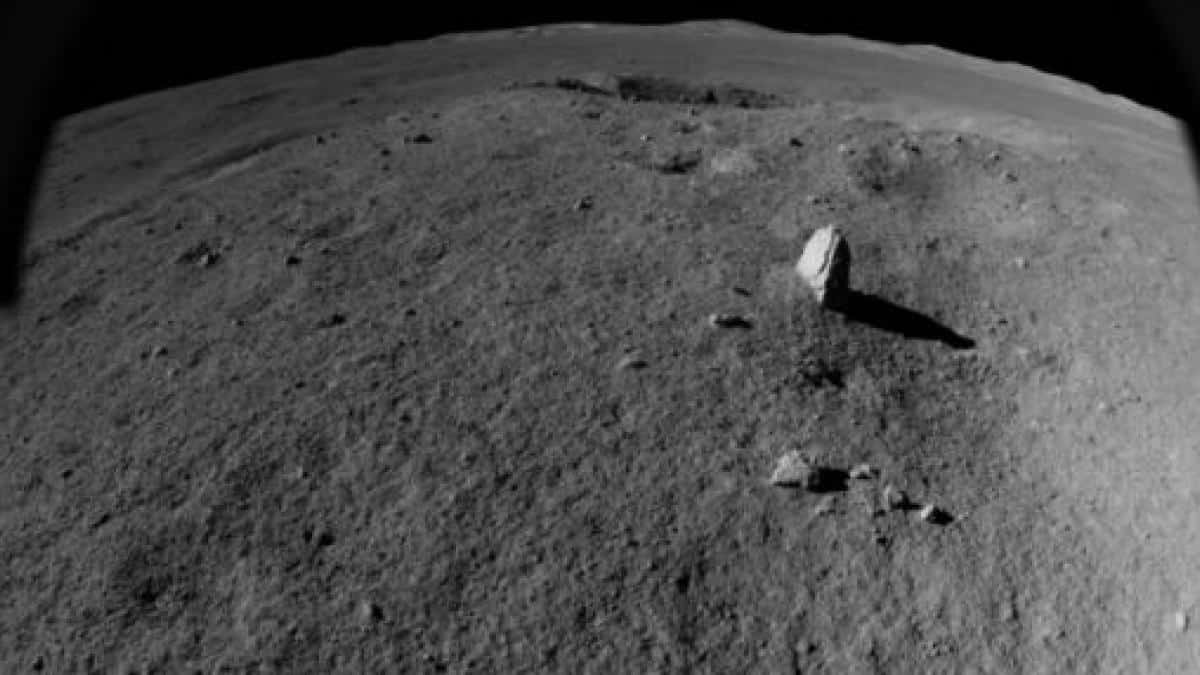
Scientists still want to discover all areas of the Moon. The hidden face of the Moon is one of the most fascinating and mysterious to discover. In order to investigate its surface, the Chinese rover Yutu-2 landed on the surface of the far side of the Moon in 2019. Since then, the chinese rover on the moon He has managed to make many discoveries.
In this article we are going to tell you about some of the discoveries of the Chinese rover on the Moon.
Chinese rover on the Moon and its discoveries

Yutu-2 is a 140-kilogram six-wheeled rover that is part of the Chang'e-4 mission of the Chinese Space Agency. Equipped with four scientific instruments, including panoramic cameras and an infrared vision system to identify gases and materials present in the atmosphere, it has traveled the dark side of the moon since January 2019.
Three years after the journey began, a new study published in Science Robotics describes the autonomous car traversing earthy soil, gelatinous rocks and small meteorites in the Von Karman crater, located in the southern hemisphere of the Moon. The southern hemisphere of the moon and is used as the landing and exploration base for Yutu-2.
According to Xinhua (the official news agency of the People's Republic of China), the rover's walk on the far side of the Moon is significantly different from the satellite's natural terrain explored before the Apollo missions. Yutu-2's travelogue claims that the rover "skids," a sure sign of slippery ground that causes its tires to sag slightly, reducing traction.
Using tires as excavation devices, Yutu-2 confirmed that the consistency of the lunar regolith from Von Karman crater is more like Earth's loamy sand than the well-defined sand on which the Apollo missions landed. The researchers responsible for the rover assured that the regolith of the region has a higher proportion of condensates, resulting in soil particles that remain uniform even when rovers weighing more than XNUMX kilograms pass over them.
Yutu-2 explored a two-meter-high crater on the eighth day of the lunar calendar and found a dark green gel-like substance that caught the attention of scientists. Based on images taken by the rover, the Chinese space agency believes the glowing material could be part of the lava from the impact or a crack in the glass created by the impact.
Glass beads

The Chinese rover mission to the Moon made another interesting discovery on the dark side of the moon. Shining through the dry gray dust, the rover's panoramic camera detected two intact globules of translucent glass.
While it may seem like a foreign object, glass is not uncommon on the Moon. This material is formed when silicate materials are subjected to high temperatures, and both components are readily available on our satellites.
According to the study, these spheres could record information about the Moon's history, including the composition of its mantle and impact events. Compositional data was not available for Yutu-2, but these natural lunar marbles could be important research targets in the future.
According to an article published in Science Alert, in the lunar past there was widespread volcanic activity that led to the formation of volcanic glass. Impacts from smaller objects, such as meteorites, also generated intense heat that led to the formation of glass. The latter may be behind the globules observed by Yutu-2, according to a team of scientists led by planetary geologist Xiao Zhiyong of Sun Yat-sen University and the Chinese Academy of Sciences.
However, it's hard to be sure, because most of the glass found on the moon so far looks different from the spheres found by Yutu-2. There are a large number of blood cells, but they are often less than a millimeter in size. On Earth, these tiny glass spheres were created during impacts that generated heat so high that the crust melted and was ejected into the air, according to the Science Alert article. The molten material hardens and falls back into tiny glass beads.
Yutu-2's spherules are much larger, 15 to 25 millimeters across. That alone doesn't make them special. But it is that glass spheres up to 40 millimeters in diameter were recovered from the near side of the Moon during the Apollo 16 mission. The glass spheres were tracked to a nearby impact crater, also believed to be impact spherules.
Differences of the discoveries of the Chinese rover on the Moon

There are discrepancies between the findings. According to Xiao and the Chinese scientists, the sphere on the other side appears translucent with a glassy sheen. In addition to the two that appeared to be translucent, they found four globules with similar brightness, but could not confirm their translucency.
The globules were found near the nearest impact crater, which could suggest they formed during lunar meteorite impacts, though they may have existed, buried below the surface, only to be gouged out by the impact. However, the team believes the most likely explanation is that they formed from a type of volcanic glass called anorthosite, which melted back on impact to reform the round, translucent spheres.
In general, the peculiar morphology, geometry, and local environment of the glass spheres are consistent with plagioclase impact glass. That could make these objects the lunar equivalent of land formations known as tektites: glassy, pebble-sized objects that form when material from Earth melts, is ejected into the air, and hardens into a ball. When it falls again it's like a bigger version of these little spheres.
According to Chinese scientists, this conclusion cannot be determined without first studying their composition, but if they are lunar meteorites, they may be common on the lunar surface. This opens up some tantalizing possibilities for future research.
I hope that with this information you can learn more about the Chinese rover on the Moon and its discoveries.